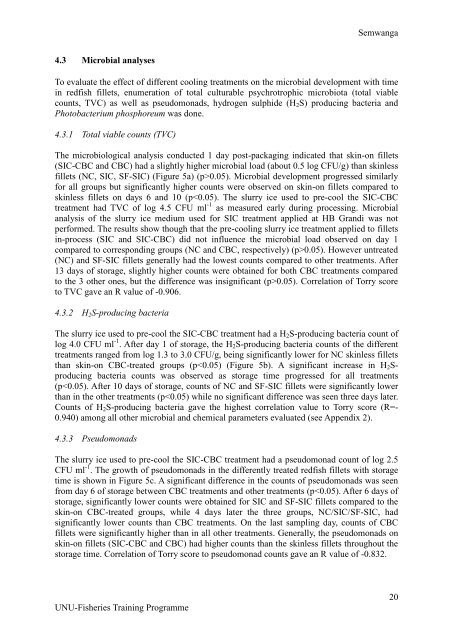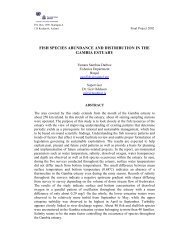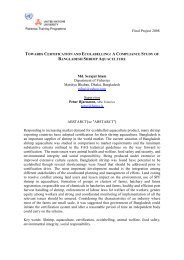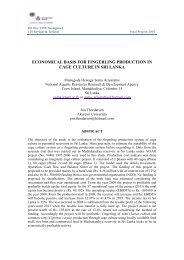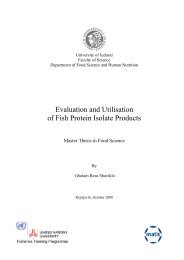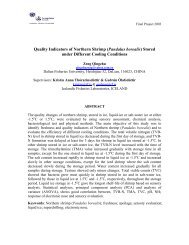THE EFFECT OF DIFFERENT COOLING TECHNIQUES ON THE ...
THE EFFECT OF DIFFERENT COOLING TECHNIQUES ON THE ...
THE EFFECT OF DIFFERENT COOLING TECHNIQUES ON THE ...
Create successful ePaper yourself
Turn your PDF publications into a flip-book with our unique Google optimized e-Paper software.
Semwanga4.3 Microbial analysesTo evaluate the effect of different cooling treatments on the microbial development with timein redfish fillets, enumeration of total culturable psychrotrophic microbiota (total viablecounts, TVC) as well as pseudomonads, hydrogen sulphide (H 2 S) producing bacteria andPhotobacterium phosphoreum was done.4.3.1 Total viable counts (TVC)The microbiological analysis conducted 1 day post-packaging indicated that skin-on fillets(SIC-CBC and CBC) had a slightly higher microbial load (about 0.5 log CFU/g) than skinlessfillets (NC, SIC, SF-SIC) (Figure 5a) (p>0.05). Microbial development progressed similarlyfor all groups but significantly higher counts were observed on skin-on fillets compared toskinless fillets on days 6 and 10 (p0.05). However untreated(NC) and SF-SIC fillets generally had the lowest counts compared to other treatments. After13 days of storage, slightly higher counts were obtained for both CBC treatments comparedto the 3 other ones, but the difference was insignificant (p>0.05). Correlation of Torry scoreto TVC gave an R value of -0.906.4.3.2 H 2 S-producing bacteriaThe slurry ice used to pre-cool the SIC-CBC treatment had a H 2 S-producing bacteria count oflog 4.0 CFU ml -1 . After day 1 of storage, the H 2 S-producing bacteria counts of the differenttreatments ranged from log 1.3 to 3.0 CFU/g, being significantly lower for NC skinless filletsthan skin-on CBC-treated groups (p


